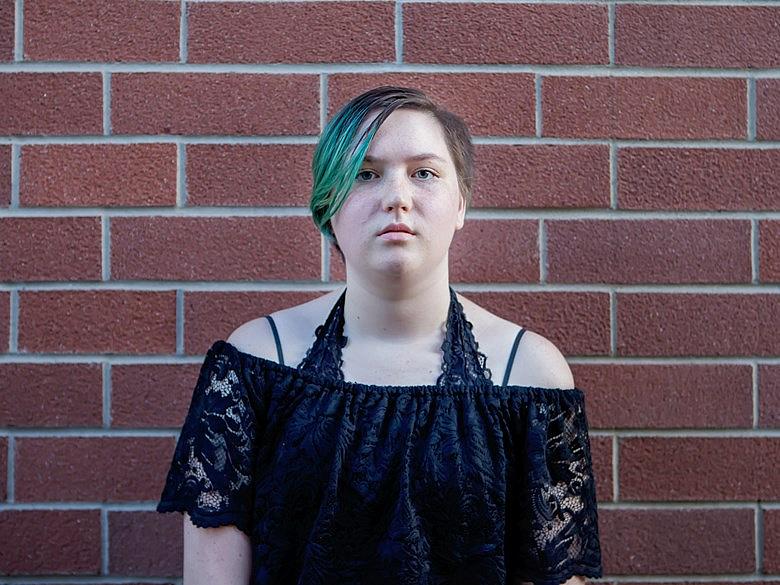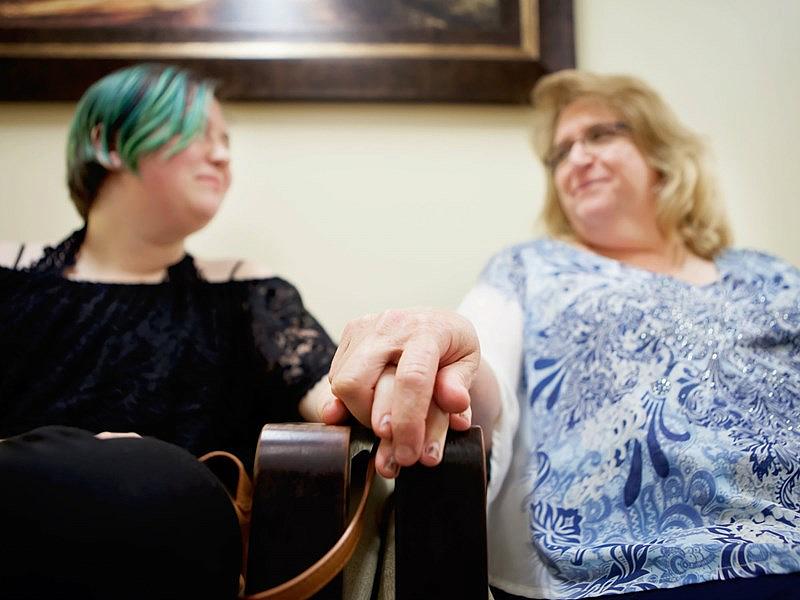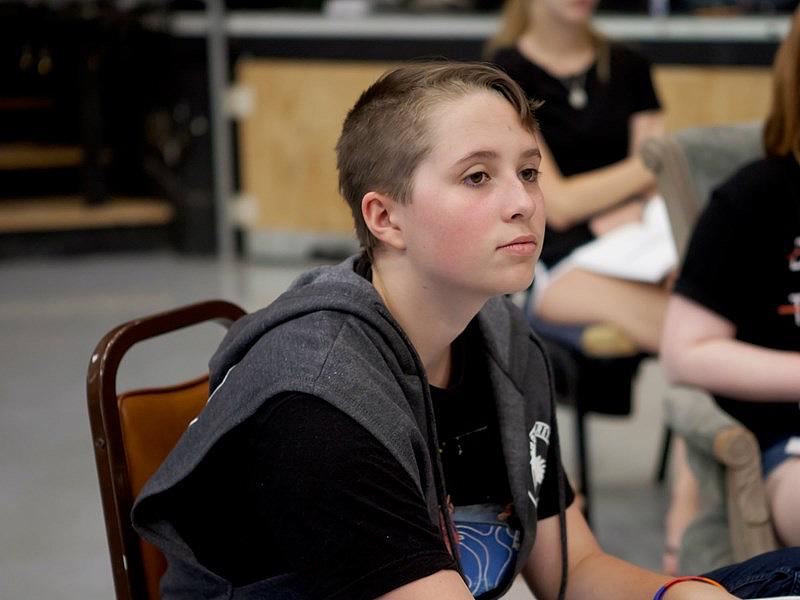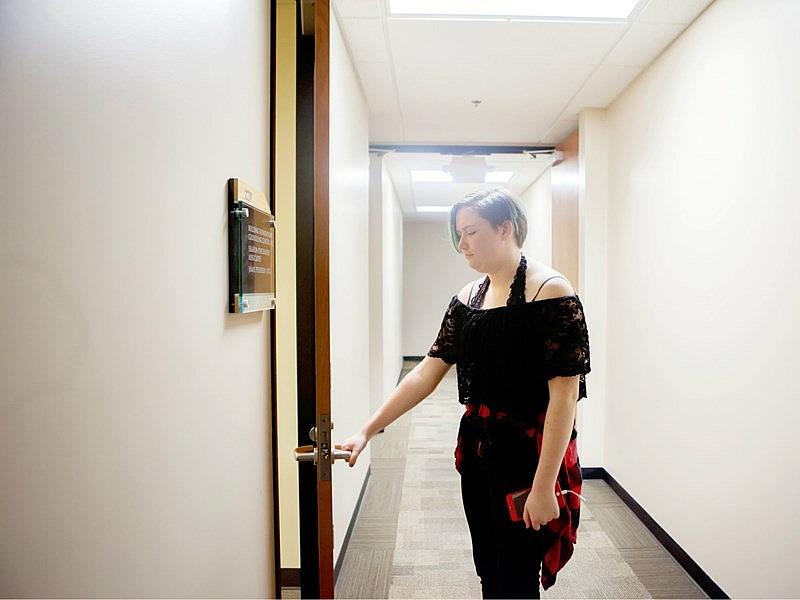Dying To Get Out: Stigma, ‘Copycat Effect’ Drive Youth Suicide In Rural Amador County
This story was produced as a project for the 2018 California Fellowship, a program of the Center for Health Journalism at USC Annenberg.
Other stories in this series include:
Why Veterans Face Heightened Suicide Risk in Amador County and Other Rural Areas
Where are the psychiatrists? Amador County and rural California hit hardest by physician shortage
CapRadio Healthcare Reporter Examines Rural Suicide In Amador County
How Suicide Trainings, Community Connections Could Patch Holes In Amador’s Mental Health Safety Net
The ‘S’ Word: How Suicide Is Devastating Amador County And Rural Communities
Q&A: How CapRadio Found Data On Suicides In Amador County
Chronic Loneliness Is A Major Cause Of Suicide For Seniors, Especially in Rural California

Liz Larson said it’s easier to stave off suicidal thoughts now that she’s studying from home and communicating more openly with her mom. But she still suffers from depression and anxiety. (Vanessa S. Nelson/Capital Public Radio)
At the start of the last school year, Stacey Larson got used to her 15-year-old daughter, Liz, shutting herself in the bedroom at the end of the hallway.
Stacey thought it was just teen angst. Liz had been sleeping a lot, slacking on homework, and not wanting to see her friends.
“I just literally thought she was lazy and was going to get over it,” Stacey said. She and her husband “threw a drug at her” and hoped for the best.
“[We] didn’t take it seriously enough,” she added.
The wake-up call came in January, when Liz stumbled out of her room and told her mom she’d swallowed half a bottle of Zoloft in an attempt to end her life.
“She couldn’t talk, she was just shaking,” said Larson, who remembers her daughter saying she “did something bad.” She thought she’d spent too much money, something minor.
“And so for her to say she took the pills was not even on my radar,” Stacey said.
Most teens dip into slumps, or even throw attitude, as they try to establish their identities. But in Amador County — a rural area that gathers around school sports, church events and patriotic values — many young people say they don’t have a healthy way to express feelings of being trapped and misunderstood.
And teens who live in remote places are more likely to seek a fatal escape.
For people age 10 to 24 nationally, the suicide rates in rural areas are nearly double those of urban areas, according to a major study from the Journal of the American Medical Association. Researchers said it’s mainly due to the lack of psychiatrists, the high gun ownership rates, and the stigma.
Within hours of attempting to take her own life, Liz was checked into a facility for 24-seven monitoring while she recuperated from her breakdown.
Liz described how she felt in the days and weeks before: “Things just got so bad that I just shattered. That was my breaking point. It had been boiling for a few months, and it just kind of exploded. … I didn’t see other solutions, so instead I was just like you know what, fuck it.”
And then she took the pills.
Liz said her decision stemmed from the judgmental attitudes from adults in her town, which made her not want to talk about the depression she was feeling at school.
“It was like a daze, I would walk in and I’d just be blank I guess, and then I’d feel like I wanted to cry all the time,” she said of a typical day. “I just felt like shit basically.”
For Liz, these feelings mostly had to do with school stress. Other kids grapple with bullying, sexual identity, or family issues such as substance addiction and domestic violence.
In Amador County, the paths for young people might seem limited. Many families live below the poverty line. There’s no community college, and since the lumber mills closed in the ’90s, the biggest employers are the prison and the casino.
At school, Liz said her mind would wander to dark places, but then she’d get into a panic about failing her parents and teachers. She said this cycle caused a “tornado” of emotions that made it impossible to focus.
In a letter to school administration explaining her poor performance, she described it this way:
“I’ve hit the hot air anxiety and the cold air depression swirling inside of me wanting to crush everything in its path. This is not just a little sadness and laziness that is affecting school life. This is my reality.”
When Stacey realized what was really going on with Liz, she had to loosen the reins on schoolwork, and even on basic daily tasks like chores and hygiene. The family does everything now with attention to Liz’s careful emotional balance.
“My expectation is for her to live, and to shower,” Larson said. “That isn’t high. I would love to see her get a nursing degree or a teaching degree. But that isn’t where we’re at anymore, that’s changed dramatically from what it was.”
Liz Larson and her mom, Stacey Larson, now have a plan to manage Liz's depression and anxiety. (Vanessa S. Nelson/Capital Public Radio)
And they’ve got a plan to monitor Liz’s depression and anxiety: a scale of one to 10. She was at five for a while, but recently started reporting sevens. If they get to nine-and-a-half, the plan is to head back to a mental facility like the one where Liz recovered after her attempt.
But Larson said most parents don’t communicate this closely with their teens.
“You’ve got these kids out here who are literally crying out for help, and none of their parents are paying any attention,” she said. “That’s why we’ve had suicides”
No One To Talk To
Schools have their own role to play in identifying kids at risk.
On the Amador High School campus earlier this summer, improv coach Scott Coleman broached the subject with a group of students during a break from rehearsing a musical. They talked about friends and family they’d lost to suicide, fights they had with their parents, and what it’s like to grow up in a small town where the “good ol’ boy” mentality thrives.
“In such a close knit community, people get these deadlocked perceptions of who you are based on how they remember you,” said 15-year-old T.J. McLean. “Just the thought of that tends to guilt trip kids, and it’s not OK ... all the adults are like your parents.”
Coleman said this is why kids are often afraid talk to adults about what’s going on in their lives. Instead, they talk to their friends about depression, anger and anxiety. That isn’t necessarily healthy, especially when other students are attempting or dying by suicide.
“There’s the fear that if [adults] talk about it, more kids will have the idea,” Coleman said. “And I don’t think that fear is valid, because [kids] are talking about it. Just trying to keep it quiet just adds to the problem. The conversations are happening and we’re not contributing.”
T.J. McLean attends musical rehearsals at Amador High School. “In such a close knit community, people get these deadlocked perceptions of who you are based on how they remember you,” McLean said. (Vanessa S. Nelson/Capital Public Radio)
At the Amador County Unified School District, administrator Sean Snider said teachers are trained to look for red flags. If a student talks about ending their life or shows other major signs of distress, a counselor is assigned. The district recently hired additional counselors and a psychologist.
But 19-year-old D’Lynn Zagami said she had to fight to get the school to pay attention to her own struggle.
At age 16, she was constantly feeling sad and thought about hurting herself. But she didn’t know what depression was, or that it was treatable.
“Looking back now, I realize the reason I didn’t know something was wrong with me, the reason I didn’t feel normal, is because no one talks about it,” she said. “They put it away, put it under the table.”
She tried to escape the dark feelings by swallowing a bottle of pills. Finally, she got help at a hospital and then a psychiatric facility. Her senior year of high school, she wrote a play about her journey and recovery.
When she presented the script to the school district, they approved it. But she said some staff told her it wasn’t appropriate.
Snider said the school eventually showed the play. But they had to be mindful that school year, because another student in the district had died by suicide just a few months prior.
“We wanted to be careful, and cautious, and respectful of that family,” Snider said. “With that performance, there was a risk. At that point, the contagion effect was very real.”
Education Versus Contagion
The “contagion effect” is when one suicide triggers a string of other deaths, sometimes called a suicide cluster. This phenomenon has been well-documented in news headlines, and almost always occurs among young people.
Nadine Magaña, a program coordinator with an Amador nonprofit called Nexus Youth and Family Services, said this is why it’s crucial for schools to handle a suicide’s aftermath swiftly. They should keep the emphasis on facts and resources, and avoid describing methods used or discussing details such as a suicide note.
“After somebody passes, there’s always all the good memories that come out and that's a normal part of the death process,” she said. “But if there’s other youth feeling the way that person may have been feeling, they may see that as a positive end to their suffering … they’ll see that memorialization, everybody just loves that person.”
Liz Larson attends a therapy session. (Vanessa S. Nelson/Capital Public Radio)
While adults can sometimes pay tribute to people who’ve died by suicide without taking drastic action themselves, Magaña said young adults lack the impulse control to process those events. Experts say that’s what makes media glorifying suicide — such as the hit Netflix show Thirteen Reasons Why — so dangerous.
Her nonprofit is offering mental health first aid trainings throughout the fall, to help parents recognize the difference between normal teen behavior, and warning signs for suicide.
Liz Larson said it’s easier to stave off suicidal thoughts now that she’s studying from home and communicating more openly with her mom. But she still suffers from depression and anxiety, and there are days when even leaving her room seems like climbing a mountain.
She said she wants people in Amador County to know that teens with mental illness aren’t going out of their way to be lazy or obstinate — they just need help.
“It feels like they’re telling me I’m not trying,” she said. “But I am trying. I’m trying my hardest right now, and you’re just demeaning me. I don’t know how to explain that it’s not true.”
If you’re thinking about suicide or know someone who is, call the national suicide prevention lifeline at 1-800-273-8255.
Music is “Low Light Switch” by Blue Dot Sessions.
[This story was originally published by Capital Public Radio.]

